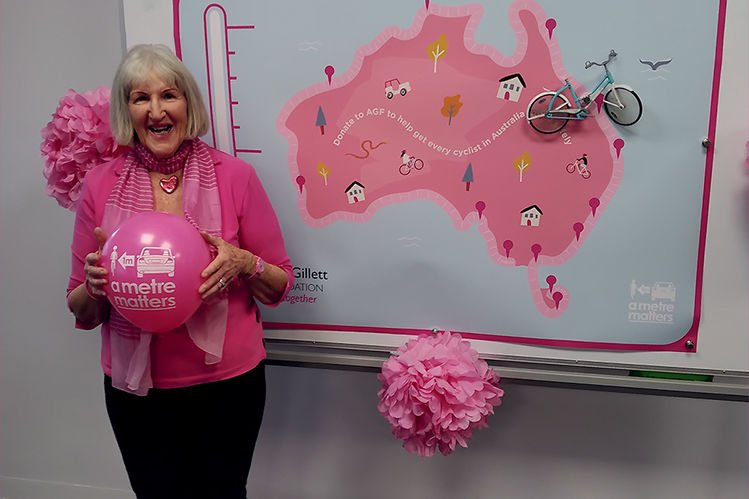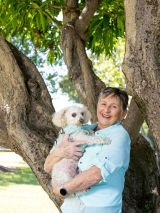Five minutes with Mary Safe
After her daughter, Amy Gillett, died while cycling with the Olympic team in Germany, Mary Safe got together with her husband and her daughter’s husband to start the Amy Gillett Foundation. After success with minimum passing distance laws around the country, Mary has turned her attention to the Dutch Reach.
By Amara Motala

The major achievement was the changing of the law regarding safe passing distances, so that when a motorist passes a cyclist on the road in a 60km zone, they’re obliged by law now to allow a distance of 1 metre. If it’s in a speed zone of 80km or 100km, that distance becomes a metre and a half. I can remember when the first legislation was passed, I couldn’t hold back the tears. I felt so hopeful for safety around cyclists.
The foundation is looking at infrastructure—how the road is divided up. How do we arrange the road so that pedestrians, cyclists, and motorists can travel safely? One of those ways—which is very successful overseas—is separated bike lanes, where there is a strip of concrete on the outside of the bike lane.
It’s meant to prevent something called ‘dooring’ which occurs when a driver wants to get out of their car but does not look to see if there’s anything coming past on the road. If they open the door in the path of a cyclist, they haven’t got any time to pull up. It’s killed cyclists all over the world.
So, the Dutch Reach was developed.
When a driver is getting out of a car, instead of using their right hand to open the door, they put their left hand across onto the door handle. When you do that, it causes your body to swivel, you turn your head back and can see if there is anything coming. Clearly, if there is something, you won’t open the door.
I thought to myself, where would you start teaching that to people? It could be with learner drivers. So, I contacted a man in Adelaide who heads up driving instructors’ associations, and we met. And we were on the same page as far as safety goes.
He came up with a great idea of getting stickers made to put onto the front of the driving instructors’ logbooks and the students’ books. So, when they pick up that book, there is that sticker looking at them depicting how to do the Dutch Reach.
Whatever way you use the road, you need to be totally aware 100% of the time of everything that’s going on around you. The bottom line with road tragedies is that they’re preventable. If only someone hadn’t been speeding, if only someone hadn’t gone through the red light, you might have had your loved ones here still.



